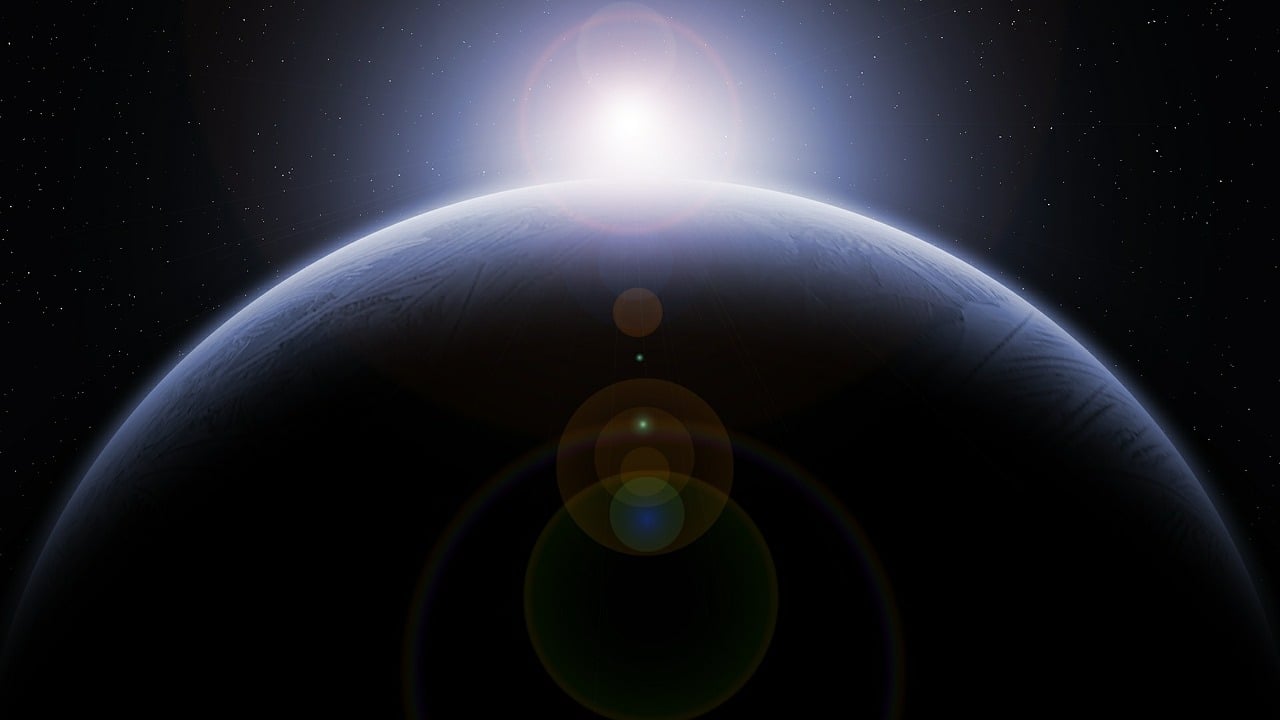Potential for a second earth

The quest for habitable exoplanets beyond our solar system has captured the interest of scientists and the public alike. Among the most intriguing candidates are Proxima Centauri b and Kepler-22b, both residing in the habitable zones of their respective host stars. The question that beckons exploration is whether these distant worlds hold the potential to be a second Earth.
The habitable zone, or Goldilocks zone, represents a region around a star where conditions might allow for the existence of liquid water. While both Proxima Centauri b and Kepler-22b fall within this zone, habitability depends on a myriad of factors. Atmospheric composition, surface conditions, and stability over time are crucial considerations.
Proxima Centauri b stands as Earth's nearest known exoplanetary neighbor, orbiting the red dwarf star Proxima Centauri in the Alpha Centauri system- a little over 4.2 light-years away (25 trillion miles). The proximity of this exoplanet has fuelled hopes of detailed study and exploration. With an Earth-like size, Proxima Centauri b resides within the habitable zone of its host star, where conditions may allow for the existence of liquid water—a key ingredient for life as we know it.
Despite its promise, Proxima Centauri b presents challenges for observation and assessment. The intense radiation and stellar flares emitted by Proxima Centauri raise questions about the habitability of its planets. The potential impacts of such stellar phenomena on the atmosphere and surface conditions of Proxima Centauri b are subjects of ongoing research, highlighting the complexities of determining the planet's suitability as a second Earth.
In a different corner of the cosmos, Kepler-22b, discovered by NASA's Kepler spacecraft, orbits a star similar to our Sun—Kepler-22. While situated at a greater cosmic distance than Proxima Centauri b, Kepler-22b shares the common thread of orbiting within the habitable zone. This super-Earth, larger than our home planet but smaller than Neptune, presents another opportunity for exploring the potential for a second Earth.
Kepler-22b's discovery relies on the transit method (a technique where the planet passes in front of its host star, causing a temporary dimming of the star's light) which provides information about the planet's size and orbital characteristics but leaves much about its composition and atmospheric conditions to the realm of speculation.
In comparing these two potentially habitable exoplanets, several key distinctions emerge. Proxima Centauri b's proximity allows for a closer examination, while Kepler-22b's greater distance necessitates a more indirect approach to study. The nature of their host stars—Proxima Centauri, a red dwarf, and Kepler-22, a G-type star—adds another layer of complexity to the analysis.
Kepler-22b, although classified as a super-Earth, remains enigmatic in terms of its composition, with uncertainties surrounding the presence of an atmosphere and its potential habitability.
Proxima Centauri's intense stellar activity poses challenges for habitability, as the planet must contend with frequent flares and radiation. On the other hand, Kepler-22b's distance raises questions about the influence of its star on its potential atmosphere and climate. Both planets highlight the importance of a holistic understanding of habitability beyond merely residing within the habitable zone.
Studying exoplanets poses considerable technological challenges. Current observational tools are limited in their ability to directly analyze the atmospheres and surfaces of distant worlds. Advances in space telescopes and detection methods, such as the upcoming James Webb Space Telescope, offer hope for a more detailed exploration of exoplanets. These technological strides may unlock critical information about Proxima Centauri b, Kepler-22b, and other potentially habitable exoplanets in the future.
In the grand tapestry of the cosmos, the quest for a second Earth remains a tantalizing pursuit. Proxima Centauri b and Kepler-22b beckon scientists to explore the potential for habitability beyond our solar system. As we navigate the complexities of stellar radiation, atmospheric conditions, and technological limitations, the dream of discovering a second Earth fuels our curiosity and inspires the advancement of astronomical research.
The search for a second Earth is not only a scientific endeavor but a testament to human curiosity and the relentless pursuit of knowledge in the uncharted realms of the universe. As technology evolves and our understanding deepens, the potential for a second Earth may one day be revealed, unlocking the mysteries of distant worlds and expanding our cosmic perspective.
Helpful terms to know:
- Exoplanet: short for "extrasolar planet," refers to a planet located outside our solar system. These planets orbit stars other than the Sun
- ‘Habitable zone’: often referred to as the "Goldilocks zone," is a region around a star where conditions are considered to be suitable for the existence of liquid water on the surface of an orbiting planet. The habitable zone is not too close to the star, where the heat would cause water to evaporate, nor too far away, where it would freeze. Instead, it's in the "just right" distance range where the temperature could allow for the presence of liquid water— key to sustaining life.
- Red Dwarf Star: a small, cool star that emits a reddish light. It is less massive and burns its fuel more slowly than larger stars like our Sun. Red dwarfs are common in the universe and are known for their long lifespans.
- G-type star: a star like our Sun, with moderate size and temperature.
Similar Post You May Like
-

CFCs, HFCs and their long, troubled history
At its peak, the ozone hole covered an area 7 times larger than the size of Europe, around 29.9 million km2, and was rapidly expanding
-

The Origin of Universe: Deciding point where it all began!
Let us unravel and surf through the ideas throughout ages to understand what the universe and its origin itself was to its inhabitants across history.
-

The Artemis Program
Inspired by the Greek goddess of the Moon, twin sister to Apollo, the artimis program was named on 14 May 2019 by Jim Bridenstine.







